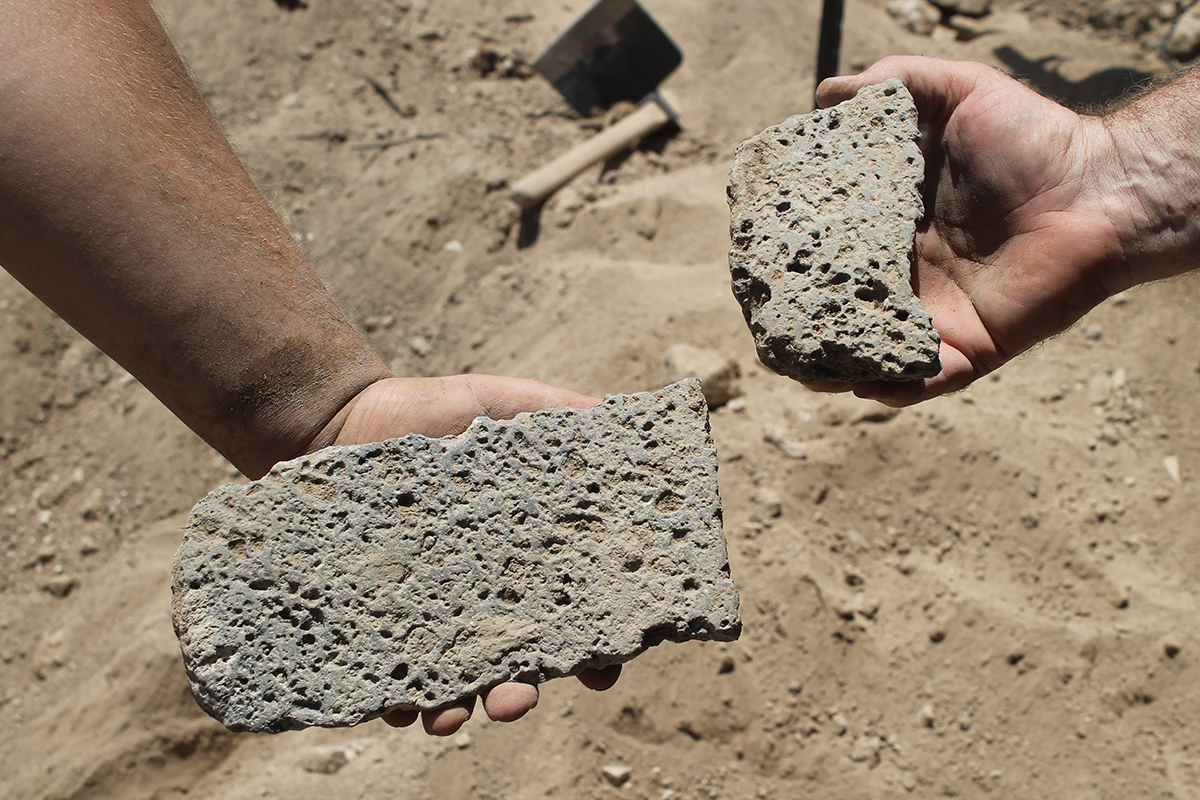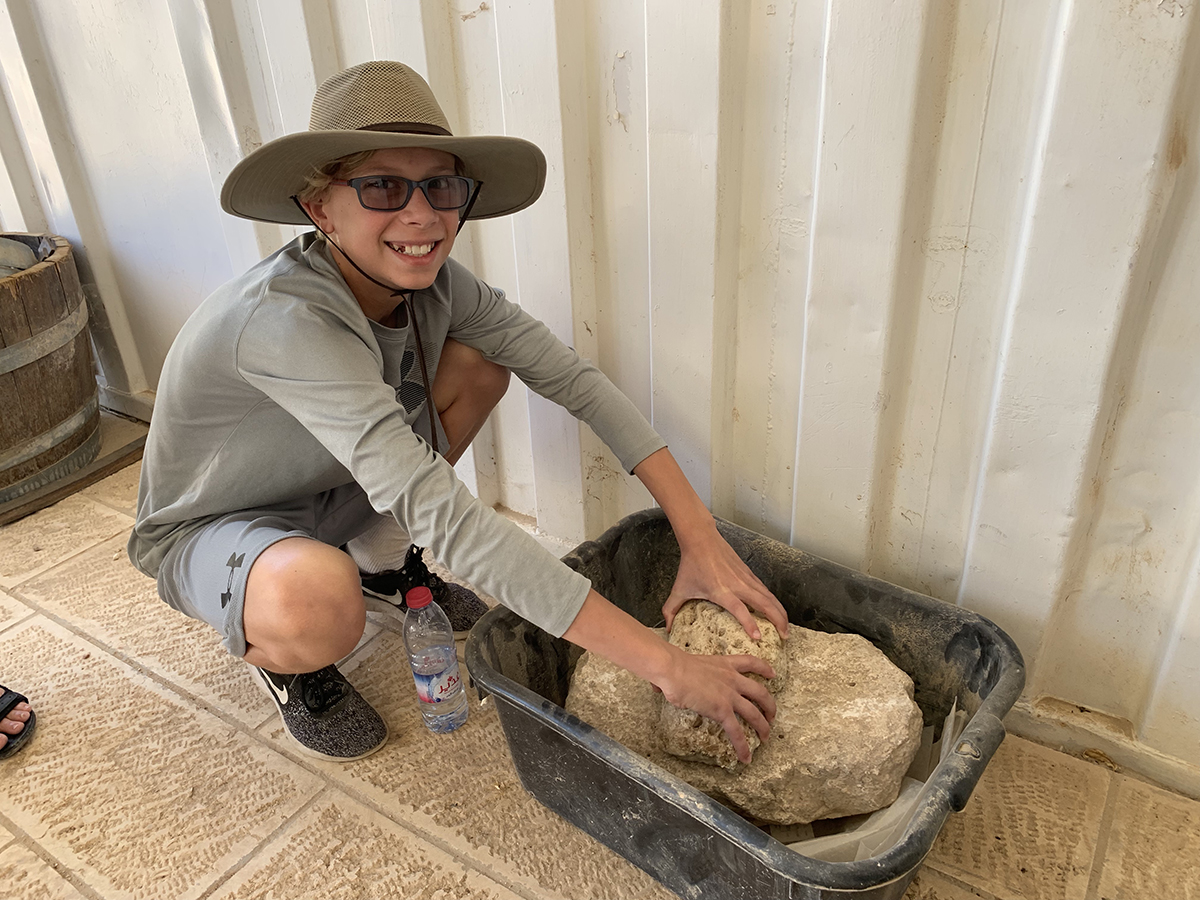

by Luke Chandler
Synopsis: Grinding stones were used in the most mundane of activities, preparing one's daily bread. Yet, the differences between then and now are fascinating.
One of the most common discoveries in a Bible-lands excavation is a set of grinding stones that were used to turn grain into flour. Grinding stones were as common in biblical homes as sinks are in modern kitchens. Virtually every family had these stone tools that helped convert grain into bread.
Grinding grain into flour, once among the most common household activities, is mostly unknown in our culture. How did it work? Domestic grinding stones came in pairs with a small, handheld upper-stone and a larger lower-stone. The user placed grains, such as barley or wheat, on the lower-stone and rubbed the upper-stone back and forth over them to pulverize the material. This process produced flour for making bread, but one can imagine the tiny bits of broken-off stone mixed into some of the loaves.
How does one recognize grinding stones among the many rocks uncovered in a typical excavation? Grinding stones have distinctive shapes that make them recognizable by a trained excavator. Lower grinding stones are generally long, flat on one side, and shaped something like a rounded rectangle. Upper grinding stones are smaller and rounder, flat on the grinding side, and typically designed to fit a woman's hand. Upper and lower stones are often found close together, so the discovery of one makes it easier to spot the other.
Understanding these stones helps us to visualize biblical events better. One can imagine grinding stones in use every day around the tents and homes of Israel, turning barley and wheat into bread flour. These elements appear in the stories of many individuals, including Abraham, Joseph, Gideon, Ruth, David, and Ezekiel, among others. The wicked Abimelech was mortally wounded by a lower grinding stone thrown by a woman (Judg. 9:51-54). Many offerings in the Old Law, including those of Aaron and the priests consisted of ground flour (Lev. 6:15, 20). Israelites were forbidden to take a grinding stone (or "millstone") as collateral on a loan because its loss could easily push a family into starvation (Deut. 24:6). Ground, unleavened flour was used for Passover bread (Exod. 12).
Grinding grain was included in the everyday scenes that Jesus used to illustrate His teachings. In describing the day of the Son of Man, He said, "There will be two women grinding together. One will be taken and the other left" (Luke 17:35). In Mark 9:42, Jesus said, "Whoever causes one of these little ones who believe in me to sin, it would be better for him if a great millstone [grinding stone] were hung around his neck and he were thrown into the sea." Even today, Christians use a form of simple bread to memorialize Jesus' crucifixion (1 Cor 10:16).
An accurate picture of grinding stones, and how they were used, brings us a step closer to understanding people and events from Bible times. Despite vast differences in geography and lifestyle, we can see their lives with increasing clarity, and their examples become more relatable for modern-day seekers.
Author Bio: Luke is an elder and an evangelist with the North Terrace Church of Christ in the Tampa, FL area, where he and his wife, Melanie, are raising their five children. He has taught Archaeology at Florida College and participated in ten archaeological expeditions in Israel under the auspices of the Hebrew University of Jerusalem. Luke leads regular tours to the Bible lands and Europe. The church website is northterracechurch.com. His Bible & Archaeology blog is lukechandler.wordpress.com. He can be reached at lukechandler@verizon.net.

Image 1: Lower (L) and upper (R) grinding stones freshly excavated at biblical Lachish.

Image 2: An upper grinding stone fits this woman’s hand perfectly, even after 3,000 years.

Image 3: The author’s son, Caleb, demonstrating the use of ancient grinding stones at biblical Shiloh.

